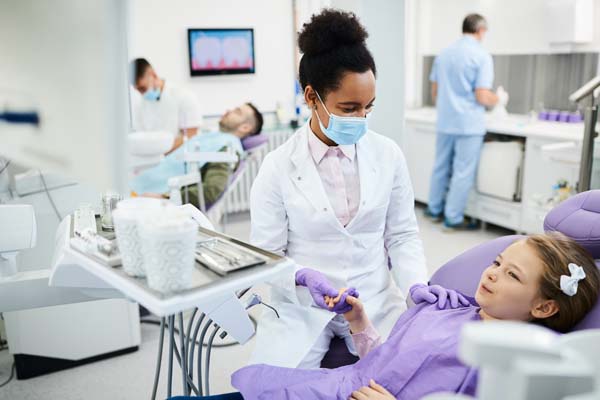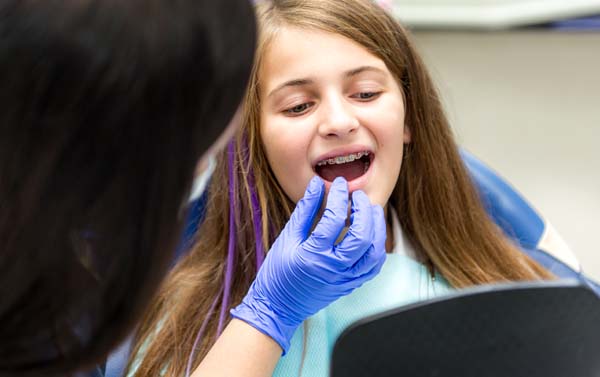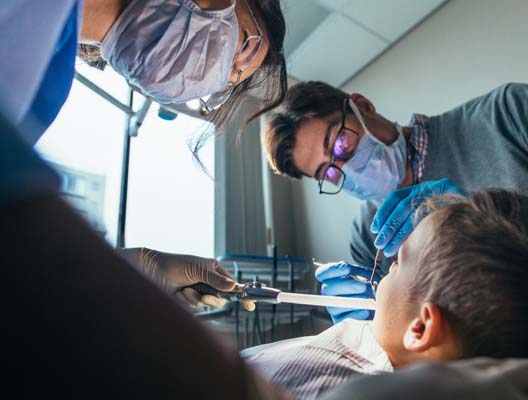What You Should Ask a Pediatric Orthodontist

If your child has misalignments or crooked teeth, you may be wondering what the options are. A pediatric orthodontist can answer all your questions and recommend the right treatment plan. You may have a lot of questions before diving into orthodontic treatment, and there are certain ones that you should ask at the consultation.
Frequently asked questions
A pediatric orthodontist has special training to work with children and ensure they get the most effective treatment. It is never too early to begin to research options when it comes to your child's teeth and smile.
What causes crooked teeth?
Genetics is the biggest cause of misaligned and crooked teeth. However, other causes include:
- Accidents or trauma
- Advanced dental decay
- Thumb sucking
- Early loss of baby teeth
What are the benefits of fixing crooked teeth?
One of the biggest benefits of fixing crooked teeth is to improve one's smile, which, in turn, increases confidence and self-esteem. However, there are other benefits besides aesthetic ones. Misaligned teeth are harder to brush and floss properly, which increases the chances of cavities and gum disease. Straight teeth are easier to clean, which often results in less decay.
If the teeth are crooked due to overcrowding, this can lead to numerous issues such as damaged teeth, bite issues, headaches, TMJ, and difficulties with wisdom teeth eruption. Crooked teeth can also result in chronic bad breath and overall health problems.
What orthodontic options are available?
The most common treatment that a pediatric orthodontist recommends is traditional metal braces. These consist of a metal bracket that is attached to the front of the teeth. They are connected with metal wires that are tightened at regular intervals to slowly move the teeth into the desired position. Children can personalize them with colored bands for a fun look.
Another option is ceramic braces. These work similarly to the metal braces, but the brackets are made with clear ceramic, so they are less noticeable.
For some patients, lingual braces may be an option. These are metal braces that attach to the back of the teeth.
For minor misalignments, clear aligners may be the right choice. These are almost invisible, and they are removed for eating and brushing.
When should my child begin orthodontic treatment?
The age to start treatment varies on a number of factors. It is recommended that a child have a consultation with a pediatric orthodontist around the age of 6 or 7, which will give you a better idea of when you should consider treatment.
How long will it take to complete treatment?
Treatment varies based on the severity of the misalignments, the type of orthodontic treatment, and each individual patient. The average completion time ranges from 12 to 36 months.
Conclusion
Fixing misalignments is advantageous in many ways. A pediatric orthodontist can recommend the right straightening option based on your child's dental problems, your child's age, and your budget.
If you think your child may need orthodontic treatment, our office can help. Schedule a consultation with the pediatric orthodontist today.
Check out what others are saying about our dental services on Yelp: Pediatric orthodontist in Lawndale, CA.
Recent Posts
A pediatric dentist works with your child to treat their condition and teach them the importance of oral health from a young age. Misalignment and malocclusions are quite common in children and adolescents as their teeth develop. There are several reasons a child might require braces. Treating these conditions early on can help guide their…
Even though braces are common among teenagers, getting them is a new orthodontic experience for every patient. Teens and their parents tend to have many questions about braces and other orthodontic treatments for teens, when to get braces, and what having braces will be like. Here are some of the most common questions orthodontists hear…
Generally, a retainer is the last vital stage of orthodontic treatment. The appliance, made from metal and plastic, is personalized for each patient to fit perfectly into the wearer’s mouth. After braces or other orthodontic devices have corrected the alignment of the teeth, the retainer functions to stop them from shifting back to their previous…
Invisalign® is a common type of invisible braces that is developed by Align Technology. Many dentists around the world have used this treatment to fix dental problems. Invisalign is basically a removable orthodontic appliance. It is often offered as an alternative to traditional solutions. It is a good option for people who want a less…


